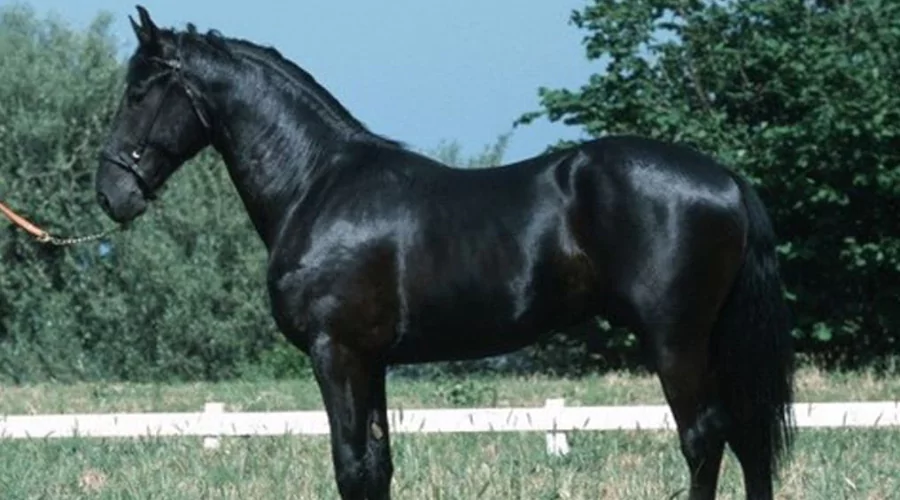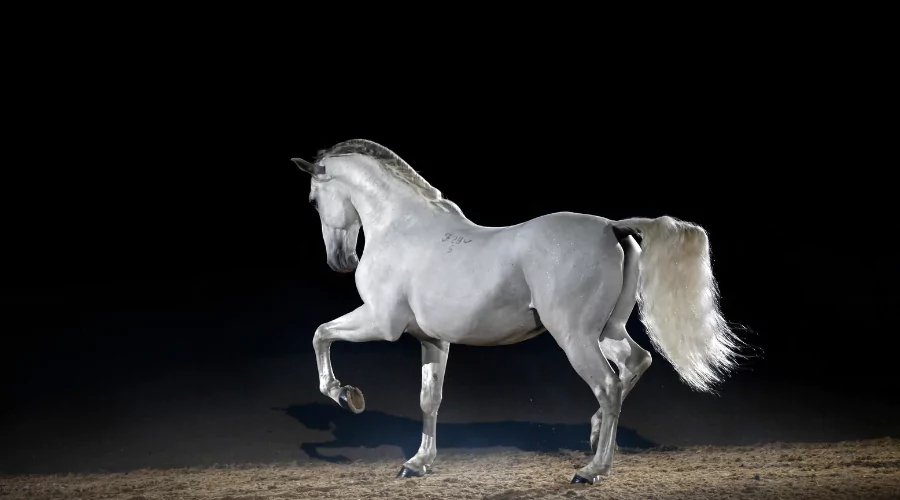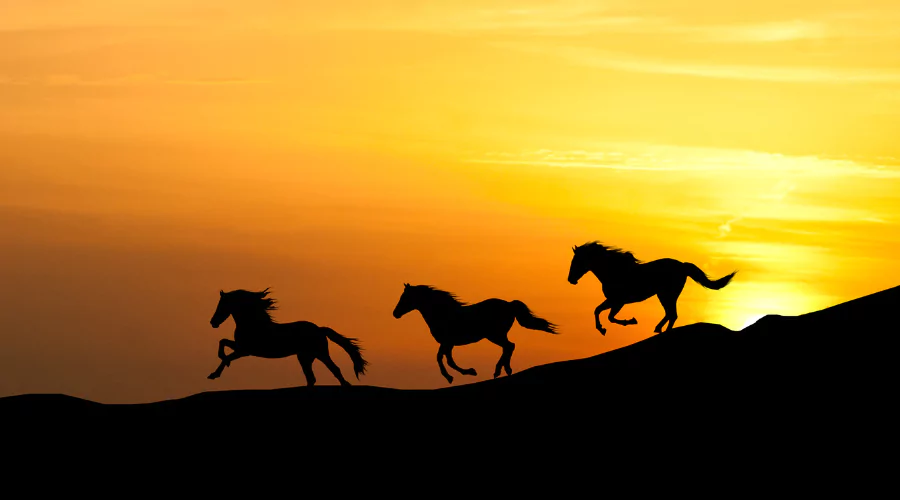Italy, a nation famous for its rich history, fine art, and culinary brilliance, is also home to numerous wonderful horse breeds that are as diverse and intriguing as the country’s culture. From the strong Italian Heavy Draft to the quick Maremmano, Italian horses possess a genealogy representing Italy’s topography and historical needs.
Italian horse breeds have played key roles in agricultural, military, sporting, and even mythical situations. The Italian stallion horse, frequently marked by its power, intelligence, and temperament, not only bears the beauty of its homeland but also the stories of its ancestral history.
These varieties have developed over ages, each tailored to the special demands of their environment, whether it is the marshy plains or the harsh highlands. This has resulted in a remarkable assortment of horses that are as different in their skills as in their looks.
In this detailed book, you’ll tour Italy’s countryside, exposing these remarkable animals’ past and present-day conditions. As we dig into the world of Italian horses, we’ll celebrate their continuing existence and honor the ardent attempts to secure their future.
History of Italian Horse Breeds
The history of Italian horse breeds is as ancient as the civilization itself, with origins going back to the Roman Empire. Horses were highly esteemed in ancient Rome, not just as combat tools but also as emblems of prestige and power. The Roman cavalry was crucial in establishing the empire, employing horse breeds that were predecessors to several Italian breeds. After the collapse of the Roman Empire, these breeds continued to evolve according to regional demands and natural selection, which led to the diverse diversity of horses observed throughout Italy today.
In the Middle Ages and the Renaissance, Italy’s many city-states and kingdoms improved their horse breeds to fulfill distinct tasks. The Neapolitan horse, for instance, was famed throughout the Renaissance for its involvement in classical dressage and as a carriage horse for the aristocracy, embodying the artistic and aesthetic aspirations of the period. Conversely, varieties like the Maremmano created in the Maremma area were bred for their endurance and toughness, appropriate for agricultural and military purposes. This time was essential in defining the distinguishing traits of what would become distinctive Italian horse breeds.
Difference Among the Italian Horse Breeds
Let’s begin our equine journey by exploring the differences among the Italian horse breeds, each with its distinct characteristics and history.

Italian Heavy Draft: The Powerhouse of Italy
The Italian Heavy Draft, or “Tiro Pesante Italiano,” is distinguished for its tremendous strength and strong body. Historically, these muscular beasts were the motors behind arduous labor duties, and even now, they play a crucial part in agricultural and load-pulling events around Italy. Their towering presence is a live reminder of the country’s agricultural history and industrial prosperity.
Known for their calm nature and hardiness, the Italian Heavy Draft horses are valued by farmers and draft aficionados alike. Their muscular frame, wide chest, and powerful limbs make them suitable for activities demanding sheer force. Their coat, generally chestnut in color, sometimes exhibits dappling – a pattern that accentuates their attractiveness and symbolizes their solid health. Despite their remarkable size, often standing between 15 and 16 hands, these horses display a surprising grace and softness. This breed remains a vital element of rural Italian culture, showing the continuous link between Italy’s agricultural legacy and its current traditions.

Maremmano: From Warhorse to Shepherd’s Ally
The Maremmano breed, coming from the Maremma marshlands, is famous for its outstanding endurance and speed. With a long background as a warhorse, the Maremmano has adapted to more peaceful functions, becoming a preferred mount for equestrians and a loyal companion for ranchers tending cattle.
Featuring a noble and beautiful physique, the Maremmano has experienced major alterations throughout its breeding history, seeking a horse that excelled in military efforts and flourished in agricultural and herding chores. Today, this breed is valued for its versatility, demonstrating a balanced combination of power and agility that suits it for both riding and labor.
The breed’s coat hues vary from bay to dark brown and black, sometimes adorned with white markings. Standing roughly 15 to 16 hands, the Maremmano’s conformation exhibits a compact but harmonious frame with a straight profile, prominent withers, and a powerful neck. Its robust back, well-rounded hindquarters, and solid legs paired with durable hooves are appropriate adaptations for the rocky landscapes and hilly terrains of its native area.
In contemporary times, the Maremmano has become associated with the phrase “multi-purpose horse.” Whether competing in equestrian events, endurance riding, or working as a shepherd’s assistant, the Maremmano exhibits a lively but trustworthy nature. Under the cautious attention of breed lovers and preservation associations, the Maremmano continues to shine as one of Italy’s equine gems, appreciated for its historical contributions and contemporary flexibility.

Murgese: The Noble Steed of Southern Italy
In southern Italy’s Murge district, the Murgese horse is valued for its noble and strong profile, a tribute to its Barb progenitors. This breed’s royal nature and flexibility make it a good option for riding and as carriage horses, conveying with them a feeling of stateliness and history.
The Murgese, with its beginnings entrenched in the rocky plateaus of the Murge area, has a history that intertwines the indigenous Italian horses with Eastern lineages, particularly from the Barb. This mix has given birth to a horse with beauty and strength, suitable to the karst surroundings that dictated its evolution.
Characterized by their blue-black coats, a distinctive and stunning trait amongst horse breeds, Murgese horses are commonly called the “black pearls” of Italy. Their thick and glossy mane and tail contribute to their magnificent look and have made them a focus of adoration during cultural events and parades. Typically ranging in height from 14 to 15 hands, Murgese horses are on the smaller side for draft types, but what they lack in size, they more than makeup for in sturdiness and tenacity.
Beyond their physical features, Murgese horses are recognized for their even temperament, intelligence, and willing demeanor. They’re easy keepers, flourishing on the limited foliage of their birthplace, which is a tribute to their toughness and ability to adapt. This breed is not just a symbol of the past but also a versatile horse of the present, with responsibilities in therapeutic riding programs, light draft labor, and competitive sports, symbolizing the continuing spirit of southern Italy.

Neapolitan Horse: The Baroque Beauty
With its Baroque appearance and beautiful movement, the Neapolitan Horse symbolized riches and royalty throughout Europe’s history. Today, this breed fascinates observers in show rings with its gracefulness and composure, sustaining its legacy as a renowned and sought-after show horse.
Originating in the royal palaces of Naples, the Neapolitan Horse is recognized for its imposing appearance and historical importance. Bred for generations to carry nobility into combat, these horses have played vital roles in the cavalry and classical dressage. Their astonishing movements, inherited from their roles in military exercises, are a tribute to their agility and trainability.
The physique of a Neapolitan Horse is defined by a high, arched neck, which contributes to their noble demeanor, and a robust, compact body suited for complicated dressage routines. They normally stand between 15.2 and 16.2 hands and have a sleek, muscular, beautiful, and useful form. While their coats are mostly gray, hues may vary from dark bay to black, all glistening beneath the sun as they perform.
In current equestrian culture, the Neapolitan Horse is valued by dressage enthusiasts and baroque horse admirers. Despite their diminished numbers, efforts by breeders to conserve this living piece of history guarantee that the Neapolitan Horse continues to be recognized not just for its contribution to equestrian legacy but also for its aptitude to learn modern-day equestrian disciplines.

Sicilian Indigenous Horse and Sanfratellano: Sicily’s Equine Pride
Known for its power and durability, the Sanfratellano breed has been an important element of Italy’s agricultural environment for ages. Originating from the San Fratello district in Sicily, these horses were deliberately bred to perform in severe circumstances, making them robust and trustworthy companions in field labor.
The Sanfratellano rises tall at roughly 15 hands, with a powerful and compact form representing its industrial heritage. Its coat color ranges from chestnut to bay, sometimes with white markings on the face and legs. The breed’s most noteworthy characteristic is its thick mane that falls down their necks in waves, giving them a royal look.
Despite being developed largely for labor-intensive jobs, the Sanfratellano is also an outstanding riding horse. Its muscular hindquarters and robust legs make it suited for hauling riders over tough terrains or competing in equestrian activities like endurance riding. This adaptability, kind nature, and simple trainability have made them a prized breed among farmers and equestrians.

Haflinger: A Northern Star in Italy’s Equine Sky
Though not originating from Italy, the Haflinger breed has found a loving home in the country’s northern areas. Appreciated for its amicable attitude and adaptability in many activities ranging from sports to therapeutic riding, the Haflinger breed has endeared itself to Italian horse fans, adding another rich layer to Italy’s equestrian scene.
Each remarkable breed depicts a chapter of Italy’s equine tale, its different qualities, and histories mirroring the nation’s physical variety and cultural transitions. As we further investigate the particular history of these breeds, we highlight their previous significance and continued presence in the fabric of Italian culture and tradition. So saddle up and join us on a fascinating adventure across Italy’s countryside, where the memory of these extraordinary horses continues to flourish.
Let their permanent existence serve as a reminder of Italy’s glorious history and a light for its bright future. And let us applaud the determined efforts to conserve these breeds, ensuring that generations may continue to marvel at their power, beauty, and cultural value. Italy’s horse legacy is a valuable jewel that should be protected and shared with the world. So, whether you are a seasoned equestrian or merely an enthusiast of these gorgeous animals, come and experience the charm of Italy’s horses for yourself.

The Lipizzaner: A Ballet Dancer in Hooves
The Lipizzaner, with roots in the Habsburg Monarchy, is noted for its magnificent demeanor and unrivaled importance in classical dressage. Often affiliated with the Spanish Riding School of Vienna, the Lipizzaner has moved beyond its beginnings to adorn the equestrian stages of Italy. Characterized by their compact and muscular frame, powerful hindquarters, and royal elegance, they symbolize living art – horses that dance.
Typically gray, albeit born dark and whitening with age, Lipizzaners are quite petite, standing approximately 14.2 to 15.2 hands. What they lack in stature, they more than makeup for in grace and intelligence, making them suited for the demands of the Haute école – the “high school” dressage movements. Their ability to make intricate moves, such as the “airs above the ground,” has not only enthralled spectators for years but also perpetuated a heritage of accuracy and elegance that originated in the Renaissance courts. As Italy continues to embrace its equine legacy, the Lipizzaner stands out as a symbol of beauty and the eternal relationship between humans and horses.
Final Words
These are just a handful of the numerous extraordinary horse breeds that have earned their way in Italy’s cultural past. From the powerful Murgese to the beautiful Lipizzaner, each breed brings a distinct tale and tradition that enhances the country’s equestrian environment. So next time you see a horse trotting through an Italian hamlet or galloping over a lush meadow, take a minute to appreciate their ongoing presence and part in the Italian experience. These horses are not simply animals — they are living icons of Italy’s history, present, and future.
So, let us continue to appreciate and commemorate these amazing equines, keeping their legacy alive via our appreciation and care. And may they always occupy a special place in the hearts of all those who admire their beauty and energy. Let us protect Italy’s horse history, ensuring its legacy continues for years to come. Grazie mille, Italia, for these wonderful horses who have grabbed our hearts and souls.
Frequently Asked Questions about Italian Horse Breeds
What are the most popular Italian horse breeds and what are they known for?
Italy is home to several popular horse breeds, such as the Neapolitan, known for its extravagant appearance; the Maremmano, valued for its robustness; the Murgese, known for its strength and agility; the Haflinger, recognized for its gentle temperament and versatility; and the Lipizzaner, celebrated for its classical dressage skills.
How do Italian horse breeds differ from other European breeds?
Italian horse breeds often display traits tailored to the diverse Italian landscapes, combining the Mediterranean climate’s influence with the demands of local agricultural and historical uses. They may also exhibit distinct aesthetic traits influenced by Italian art and culture compared to their European counterparts.
Are there riding tours or vacations where I can experience Italian horse breeds first-hand?
Various equestrian centers and tour operators throughout Italy offer riding vacations and tours specifically designed for equestrians to experience Italian horse breeds. These range from trail riding in the Tuscan countryside to dressage lessons with Lipizzaners.
What conservation efforts are being made to preserve Italian horse breeds?
Conservation efforts for Italian horse breeds include regulated breeding programs, genetic research to maintain bloodline purity, and the establishment of breed registries. Additionally, cultural events and festivals that celebrate these horses help raise public awareness and support.
Can Italian horse breeds be found outside Italy, and are they suitable for international riders?
Several Italian horse breeds have been exported and can be found in other countries. They are generally considered suitable for international riders due to their versatility, temperament, and adaptability to various riding disciplines and climates.
You may Also Like:
Horse Saddle: Types, Parts, and Differences Between English and Western Saddles
Understanding And Managing Horse Hoof Cracks
Essential Oils for Horses
Lifespan of Horses: How Long Do Horses Live
Differences between a Donkey and a Horse: Exploring Donkey and Horse Matting
